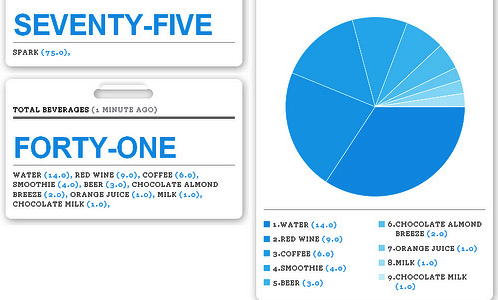We’ve previously mentioned the emerging trend “Quantified Self” here on the blog. This expression is used to characterize people who are using self-tracking tools to analyze their personal data and share it with their networks. Successful self-tracking largely depends on tools and devices that add value to the information and make it possible to effortlessly track and share complex data.
Health picturing is the essence of self-tracking
The graphic format offered by many of these tools provides users greater insight, makes the data more comprehensible, allows people to quickly understand it, and to get an overall picture of their health. The use of imagery and visualization also improves data tracking, thanks to the visual and often interactive format. This enables users to grasp their health history by understanding past actions and analyzing them to optimize their future behavior. This can improve their health because, by being proactive, it’s easier for people to make healthy decisions. That is the main reason why picturing is an important part of self-tracking and Quantified Self, as it helps answering the three prime questions: What do you do? How do you do it? What did you learn?
Which tools to use
Daytum helps users collect, categorize, and communicate everyday data though a series of simple visualizations. It gives the user a general picture of his or her personal statistics tracked over time to provide deeper insights into behavior.

Healthymagination shows US users general data on health in their area or on a national level. The interactive map allows people to examine the problems that affect them and their community.
The Bant app for the iPhone facilitates diabetes management by allowing users to visually track their blood glucose levels throughout the day on a graph that the user can share if he or she wants to.

The application Sleep Cycle is a bio-alarm clock that analyzes the user’s sleep patterns during the night by monitoring metrics such as movement and snoring. The app provides visual feedback in the form of a graph, and also offers the function to wake users up during their lightest sleep phase.

Do you use tools that allow you to put your health in graphs and pictures? Are there particular aspects of your body you would like to be able to visualize like this?


